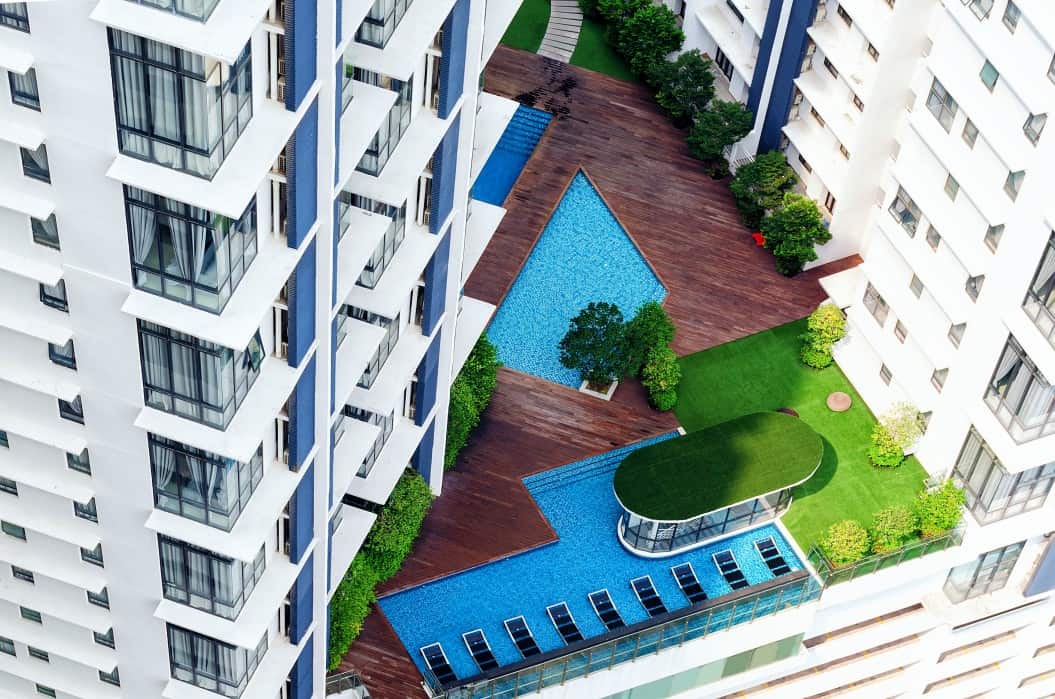When investing in new projects, it is easy to be wowed by the beautiful showrooms with themed interior designs and designer furniture.
After all, there is never an ugly showflat when millions have been poured into them.
When attending a project preview for the 1st time, it can be overwhelming to juggle the multiple assault on the senses with the hyped up crowd, elevated noise levels and adrenaline-filled showroom.
With conditions like this, it is important to arm yourself with a checklist and ample space to think before narrowing down on a choice of unit.
Despite the oft-used (But sometimes true) sales pitch: “Someone is also looking at the unit and you got to hurry..”, there’s no shame or loss taking time to make better-weighed decisions.
“Better an opportunity loss with cash in hand, than a rushed decision and long term regret.”
If you have never bought a new launch property, you may not know what exactly to look out for.
Hopefully, you make it through this article and begin your journey towards being a savvy and well-informed new launch project investor!
Let’s roll...
(This is an article first published on Stuartchng.com which I believe has tremendous value for readers of NAOF and is re-published with the permission of the author)
Differences between New Launch Buyers vs Resale Property Buyers
New launch buyers need alot more imagination, visualisation skills and faith about how the end product would turn out, the facilities design, views, space and overall feel of the property.
They would not be able to tell for certain, factors such as the ventilation level, brightness within the unit, ambient noise level and overall feel of the completed product.
Resale buyers on the other hand, have the benefit of seeing, touching, hearing and feeling all aspects of the property in person and can make easier comparisons and decisions as a result.
Alas, not every new launch buyer is blessed with great visualisation skills or knowledge and that’s where the following tips would come in handy.
Tip 1: Identifying the Premium Facing Units
In most new projects, there are multiple blocks and facings. Developers usually site their larger bedrooms layouts within the most premium facings.
For example: 4 and 5 bedrooms have the best pool views in Parc Centros compared to most of the smaller units there.
This is where studying the showflat model, site plan and doing map to ground comparisons are very important.
+ Check if the location of the showflat is on the actual site. Yes! It’s common that showflat locations are not on actual sites so ALWAYS ASK just to be sure.
Premium views typically consist of unblocked views whether overlooking a quiet and peaceful landed estate, lush greenery, the vibrant city skylines or tranquil sea and pool views. They come with a premium price tag too so you have to decide whether it is a good to have or a necessity.
Side story: I have a friend who did not mind buying a home facing the wall of a neighbouring block as their living habits consisted mainly of closed curtains and minimal view requirements.
That saved them a significant sum of money which they invested into their interiors and reaped the most bang for buck.
This made the most sense for them but would it suit everyone?
It may not always be easy to visualise what views you will enjoy and hence, always:
Ask for visuals which the developer or agent might have captured from drone footages or before the buildings on site were torn down.
Also important is to personally walk the site, do a map to ground comparison through www.OneMap.sg or go up to a high building nearby to have more certainty of the expected views.
+ As an additional precaution when choosing an unblocked facing unit, i also like to check on the Land Use Planning, Gross Plot Ratio and Height Restrictions of the land within their field of vision that may potentially block their views in the future if land zoning changes.
Note: There are no guarantees that the URA Masterplan won’t change in the future but it’s always more assuring to know about presently foreseeable risks.
You can do these checks at URA MasterPlan.
Tip 2: High, Mid or Low Floor?
High floor units are usually brighter with better ventilation than low floor ones as they get more access to the sun and are less blocked by their surroundings.
Does that mean you should always go for the highest unit available? Here are some tips!
High Floor Advantages
– Lower exposure to dust and insects
– Less noise pollution (Especially 15th storeys and higher)
– Better security compared to very low levels
– Less electricity consumption (Brighter & better ventilation)
– More privacy as less neighbours would be looking in
– Better views
Low Floor Advantages
– Less time spent waiting for/in lifts
– Safer for kids
– Better pool views or greenery views at times
– Lower cost than higher floor units
– Easier if moving bulky furniture that doesn’t fit the lifts
– Friendlier for pet owners (Especially ground floor homes or those who take the stairs)
Stuart’s Personal Recommendations
– Lower floors (7 and below) are generally what i recommend for pool view units as anything higher and you would have to be at the balcony in order to enjoy the view.
– Pool view units normally face a neighbouring block so it’s important to check the distance between blocks to be sure it’s not too close for comfort.
– It is a waste to buy a high floor pool view unit that faces your neighbours as you would end up spending most of your time looking into your neighbour’s home.
– If you enjoy greenery views, you might not need to go too high up (And spend extra $$) as your focal point changes and you will see more skies than greenery.
To illustrate this, just imagine yourself in a cable car. Not too much focus on the greenery now right?
So pick something just a few storeys above the canopy of the trees surrounding it and you get alot more greens than blues.
– Mid to mid-high floor units can be just as noisy as low floor ones. As there are more low height objects (E..g clubhouse, plants, walls) that absorb and scatter sounds on the lower floors, while sound travels and reflects upwards unobstructed.
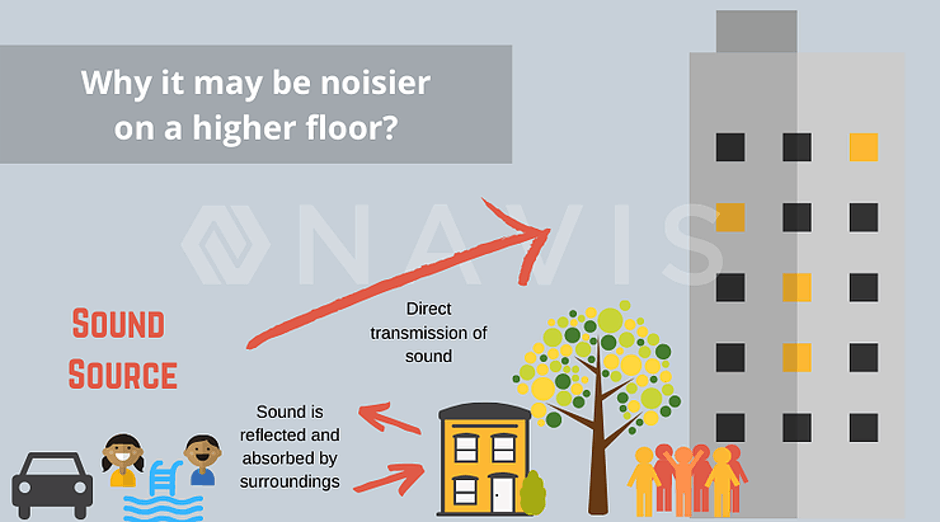
Tip 3: Near Entrance, Access Gates and Facilities
Personally, i hate to waste time navigating carparks and prefer a block that is closer to the entrance and exit of the project. You would know what i mean if you have traversed the carpark of Reflections at Keppel Bay or D’Leedon before. But that could be just me.
With choosing a block nearer to the entrance, there are pros and cons as drop off points tend to be near to the entrances and hence roads. Drop off points are seldom noisy though as traffic is slow there. So a good balance to minimise road noise could be to choose the inside facings of a block near to the entrance.
Being near access gates and facilities are important too especially if you are the type who hates walking. It could mean the difference between walking another 200m a day to the gym, mall or train station.

Tip 4: Avoid Bin Centre and Substations / Generators and BBQ Pits
Unless you just want the cheapest units in the development, there are few reasons to choose a unit facing the bin centre and substation (Usually next to each other).
Apart from the fragrance and roaches, the views are uninspiring (Unless you’re Oscar The Grouch) and will be a harder sell when it’s time to exit the investment
BBQ pits are potential hubs for noise as gatherings will be held there regularly and the smells might unintentionally waft through your home at night causing uncontrollable hunger pangs at the wrong hours.
Tip 5: Kids Pool / Water Features / Tennis Courts
If the sound of kids screaming frustrates you, or “pok pok pok” noises from your condo’s Rafaels and Federers distracts you easily, you might not want to stay too close to any of these facilities.
Water features, such as waterfalls that are switched on continuously till late evenings may also create sonic nuisance for some.
If you’re a light sleeper or easily distracted by noise, avoid staying near them.
Tip 6: Efficient Layouts
While developers do their best to provide the best views for all units as far as they can, this sometimes ends up creating layouts that are less than efficient.
Take for example layouts where there’s significant unusable corridor spaces. This means a lower actual usable space and a higher actual per square foot cost.
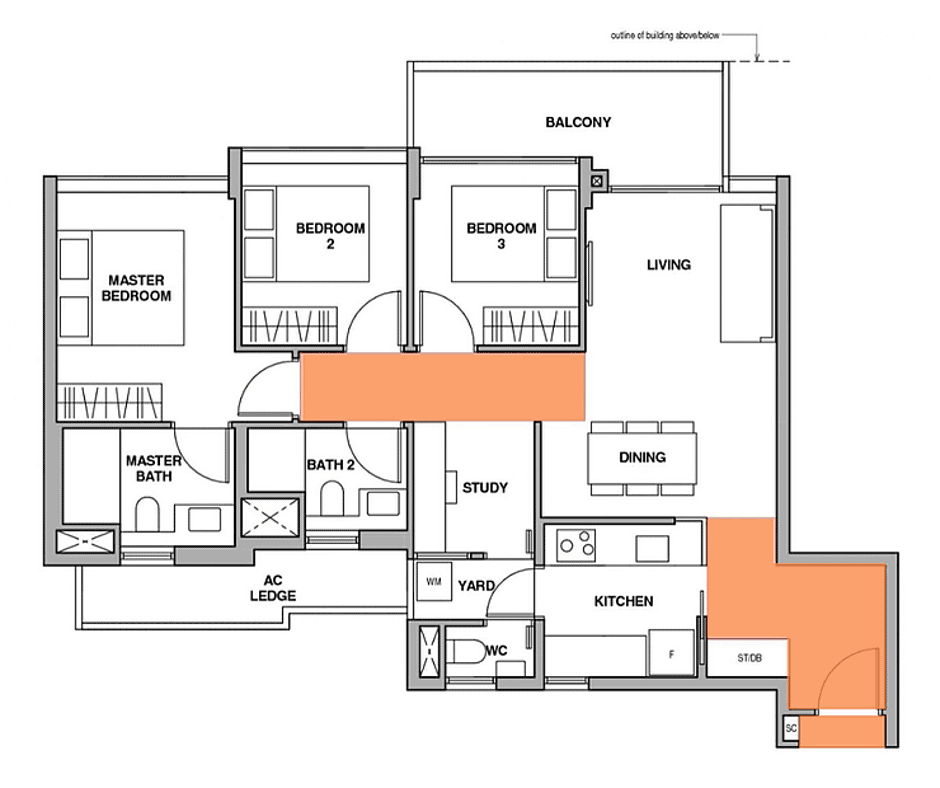
In some cases, you may not have a choice as the views that you like may only come with this layout. In such cases, you will have to prioritise which is more important to you.
Tip 7: Number of Units per floor
This is a factor that many people miss out on when buying a new launch. The number of units per floor can affect the environment you step into before you reach home.
Generally, the fewer units per floor, the better as you will spend less of your precious lifespan waiting for the lift. And, there will be fewer potential grumblers if you start using your corridor space for your barang barang
If you’re sharing the floor with 1-2 bedroom units, you can expect a higher frequency of change of neighbours as small units will more likely be tenanted than occupied by an owner occupier family.
Tip 8: Bonus Floor Space (Shhh)
One of the secrets to getting some additional free floor space to use is in choosing units that have a small lead-in to your unit before the main door.
Compare the difference between these 2 units. The one on the right has the bonus lead-in space.
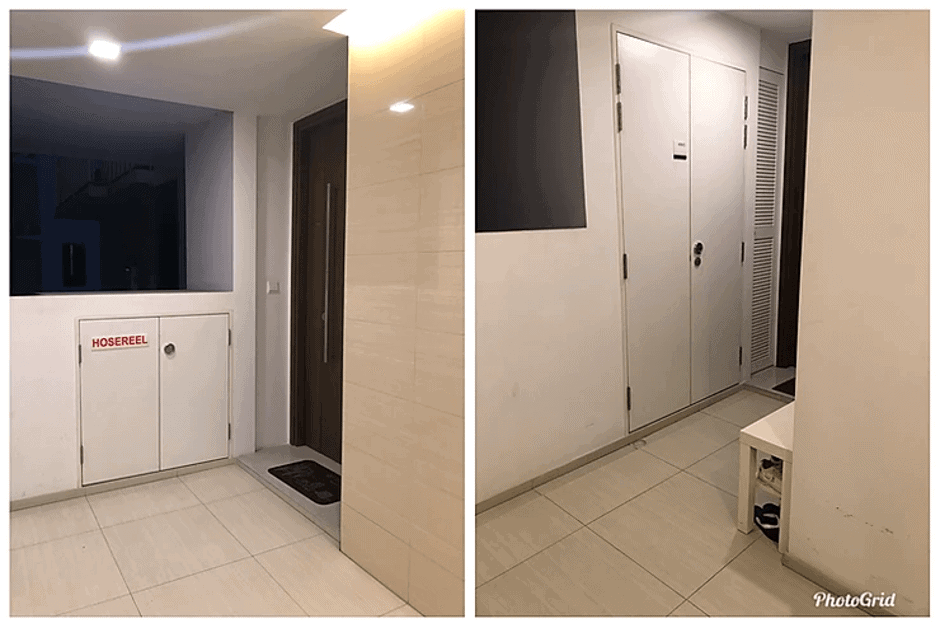
As that space is not travelled through by the neighbours, you can place an additional shoe rack or stool there without inconveniencing anyone.
This is usually not evident in the standard brochure floor plans and you would need to ask to see the floor level blueprints (Project ICs/developers might frown but ask for it anyway).
Tip 9: Road and Other Noises
Road noise is seldom welcomed by anyone and it is wise to avoid units facing a major road or highway. Check on the URA Masterplan to find out about upcoming new roads passing just to be sure there are no surprises.
E.g. With the new North South Expressway coming up by 2026, this may impact road noise of some existing and upcoming projects.
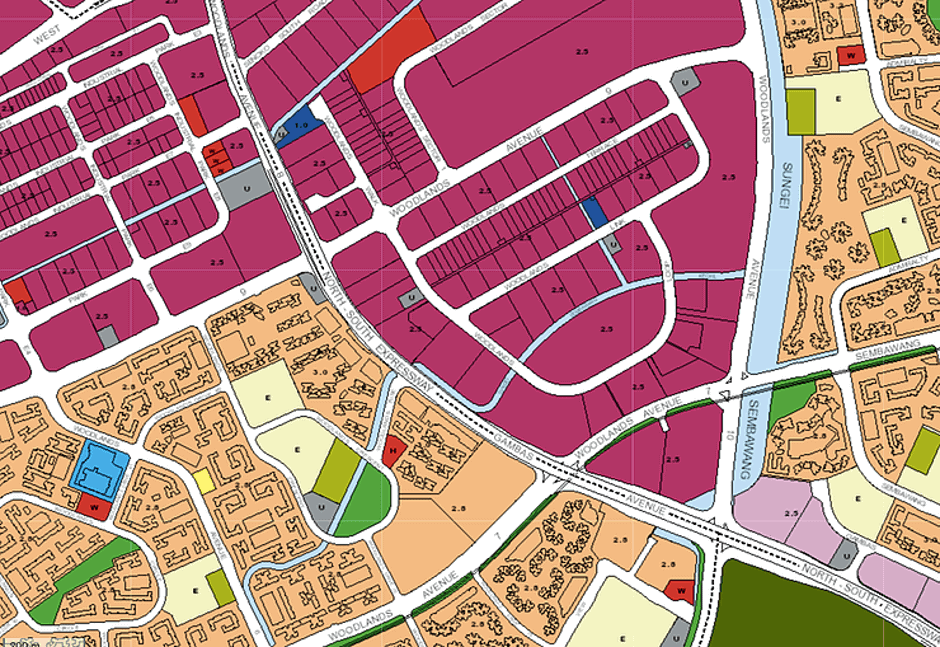
Other Noises
– In some areas such as Punggol, the daily deafening flight of the fighter planes circling overhead can be a major source of irritation especially if you work night shifts and tend to sleep in the day or work from home.
– Locations facing places of worship where loud chanting, praying and incense burning occurs are also not the typically preferred choices.
Tip 10: West Sun
Afternoon sun west facing units are generally not welcomed by locals and Asians. That is the reason why developers tend to prefer building orientations of North South facings.
These units tend to be warmer in the evenings and darker in the mornings.
However, building considerations such as views optimisation and site layout means West facing units still exist and they are one of the least preferred choices despite being useful to those who like to sun their laundry on their balconies
Westerners and Europeans are usually the ones who wouldn’t mind renting or buying west facing homes.
Tip 11. Unique Selling Points (Unit specific)
When choosing a unit, it is a bonus if you can find one that has unique selling points that stands out when selling or renting it
For Example:
– Ground floor units with a huge patio facing the swimming pool will be exceptionally attractive to ground floor lovers or those who enjoy outdoor spaces for gardening and recreation. There are only that many units in every development
– A unit on the same level as the sky terrace with jacuzzis, chill out spaces and dining pavilions will attract those who love high floor units and outdoor spaces right outside their door step.
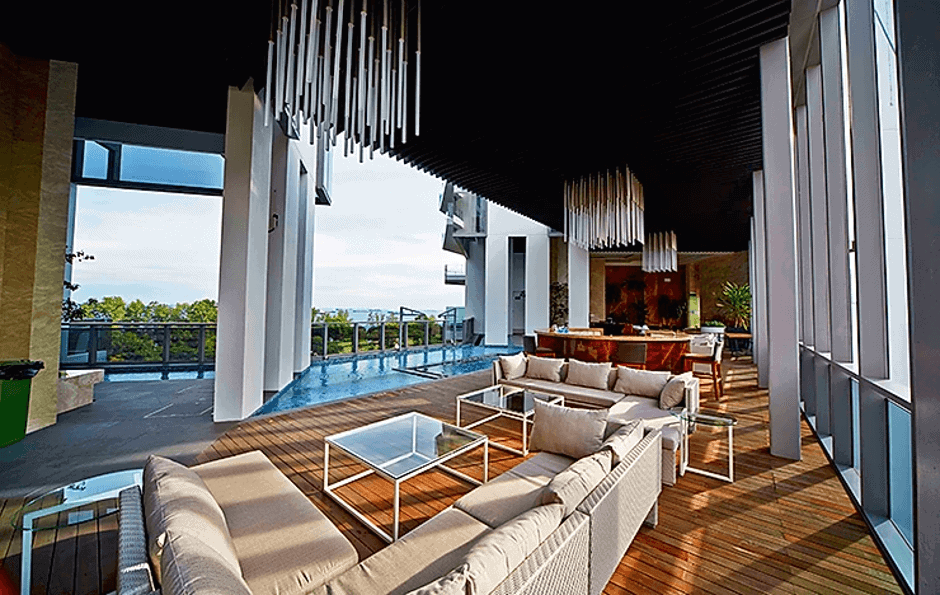
Tip 12: Standard Fittings & Materials Provided
It is good practice to find out about the supplied brands of fittings and materials that come with the unit.
Labels stuck all around the showflat will indicate these and the brands of appliances and fittings used will also indicate the developer’s standards in their products
When comparing between projects that are a close fight, it is useful to compare the fittings and materials provided to check where you are getting better value from
For example:
If you are getting marble tiles for the living, dining and bathrooms for one vs ceramic tiles for the other at a similar price point, the choice becomes clearer as you can tell which developer is providing more value for money
MoneySmart Blog’s on Renovation Costs lists out the costs of renovation and common materials used for floorings.
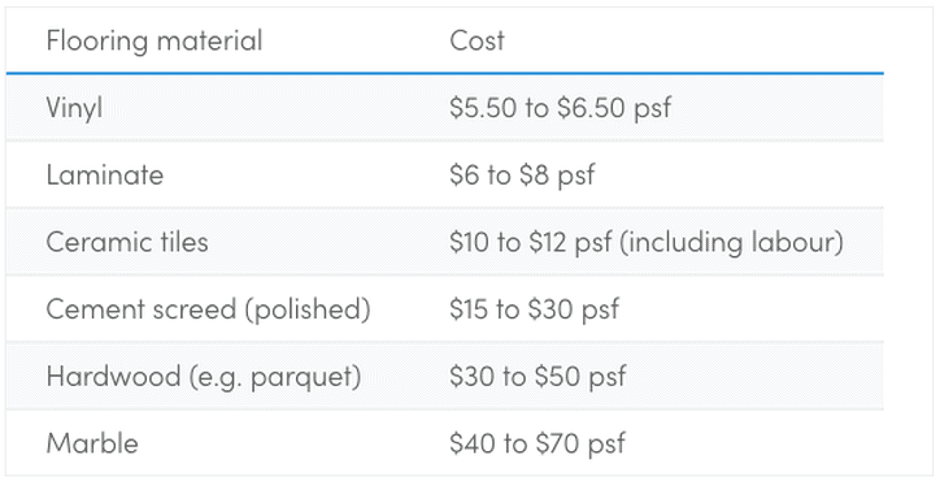
Note that within each category, there are also various grades, types and material origin. E.g. Marble is pricier than Compressed Marble. Italian marble is pricier than Dubai Marble. So it depends how much details you would like to go into.
Other factors to consider:
– Are the fridge, washer and dryer part of the deal?
– Are the electrical DB boxes concealed? Do you need to spend on carpentry to do this?
– Is there sufficient cabinet space? Would you need to incur additional costs to build them?
– Is the wardrobe full height or open top?
– Are the false ceilings provided?
To remember everything isn’t easy so you may ask for documentation of the provided items. It is a requirement for developers to provide it.
This article was first published in stuartchng.com

Stuart Chng, Senior Associate Executive Director of OrangeTee & Tie, is a renowned leader, real estate broker and personality in the real estate industry.
He is a licensed real estate agent, team leader, industry trainer and speaker, columnist for several property newsletters and blogs and is often quoted in media interviews on 938FM, Channel 5, PropertyReport, PropertyGuru and other publications.
Throughout his career, he has helped many clients grow their wealth through selecting great property investments and managing their portfolios actively.
Stuart has also coached many top million dollar producing agents from different real estate agencies in Singapore.
Do Like Me on Facebook if you enjoy reading the various investment and personal finance articles at New Academy of Finance. I do post interesting articles on FB from time to time which might not be covered here in this website.
Join our Telegram broadcast: https://t.me/gemcomm
SEE OUR OTHER WRITE-UPS
- A BETTER ALTERNATIVE TO DOLLAR COST AVERAGING?
- DIVIDEND YIELD THEORY – THE UNDERAPPRECIATED VALUATION TOOL
- TOP 5 ANALYSTS OF THE DECADE AND THEIR CURRENT FAVORITE STOCKS
- IS DRINKING LATTE REALLY COSTING YOU $1 MILLION AND THE CHANCE TO RETIRE WELL?
- DIMENSIONAL FUNDS: ARE THEY WORTH THEIR WEIGHT IN GOLD?
- THE CONFUSING MATH BEHIND RETIREMENT SUM SCHEME AKA CPF LIFE PREDECESSOR
Disclosure: The accuracy of the material found in this article cannot be guaranteed. Past performance is not an assurance of future results. This article is not to be construed as a recommendation to Buy or Sell any shares or derivative products and is solely for reference only.

